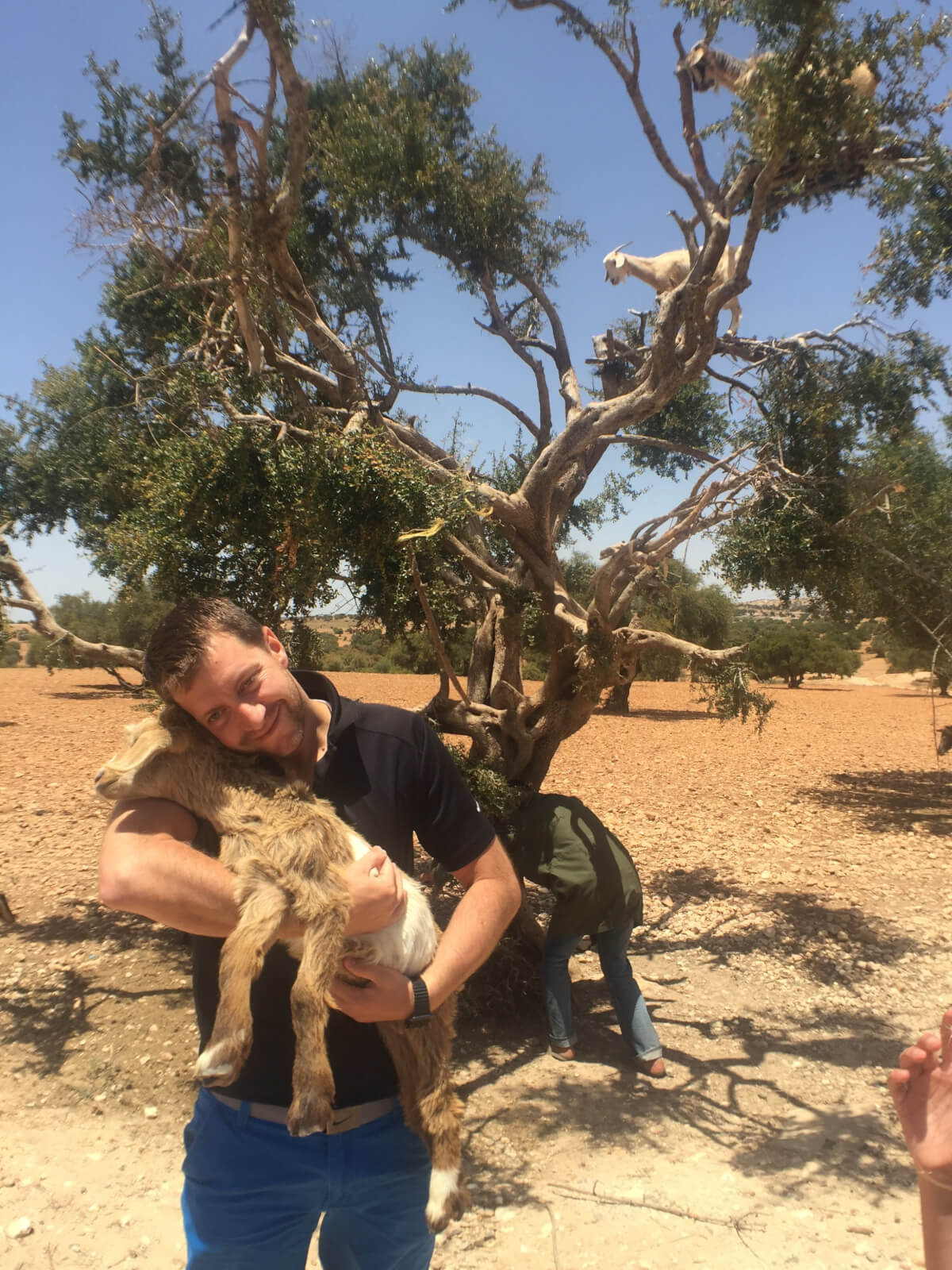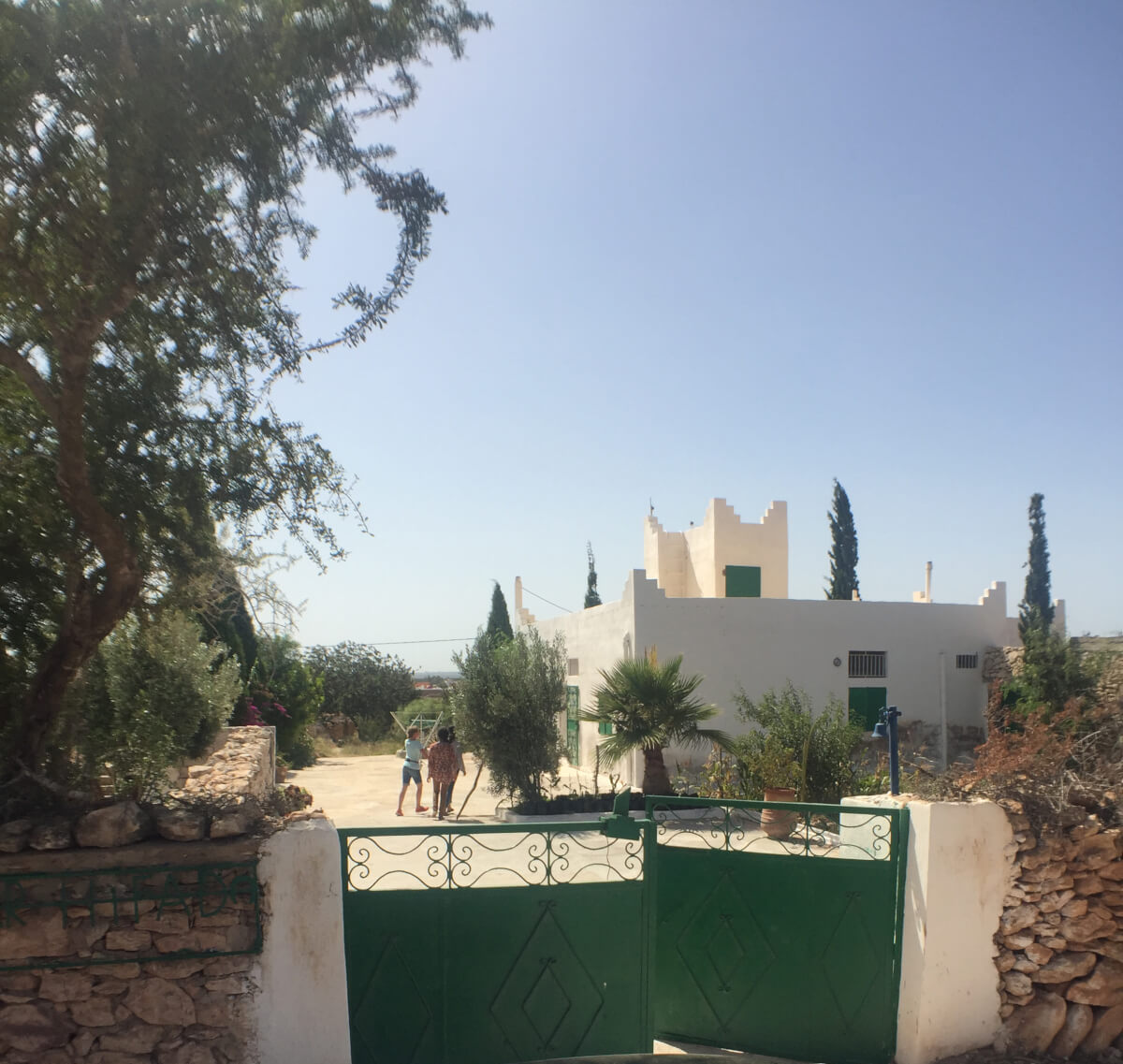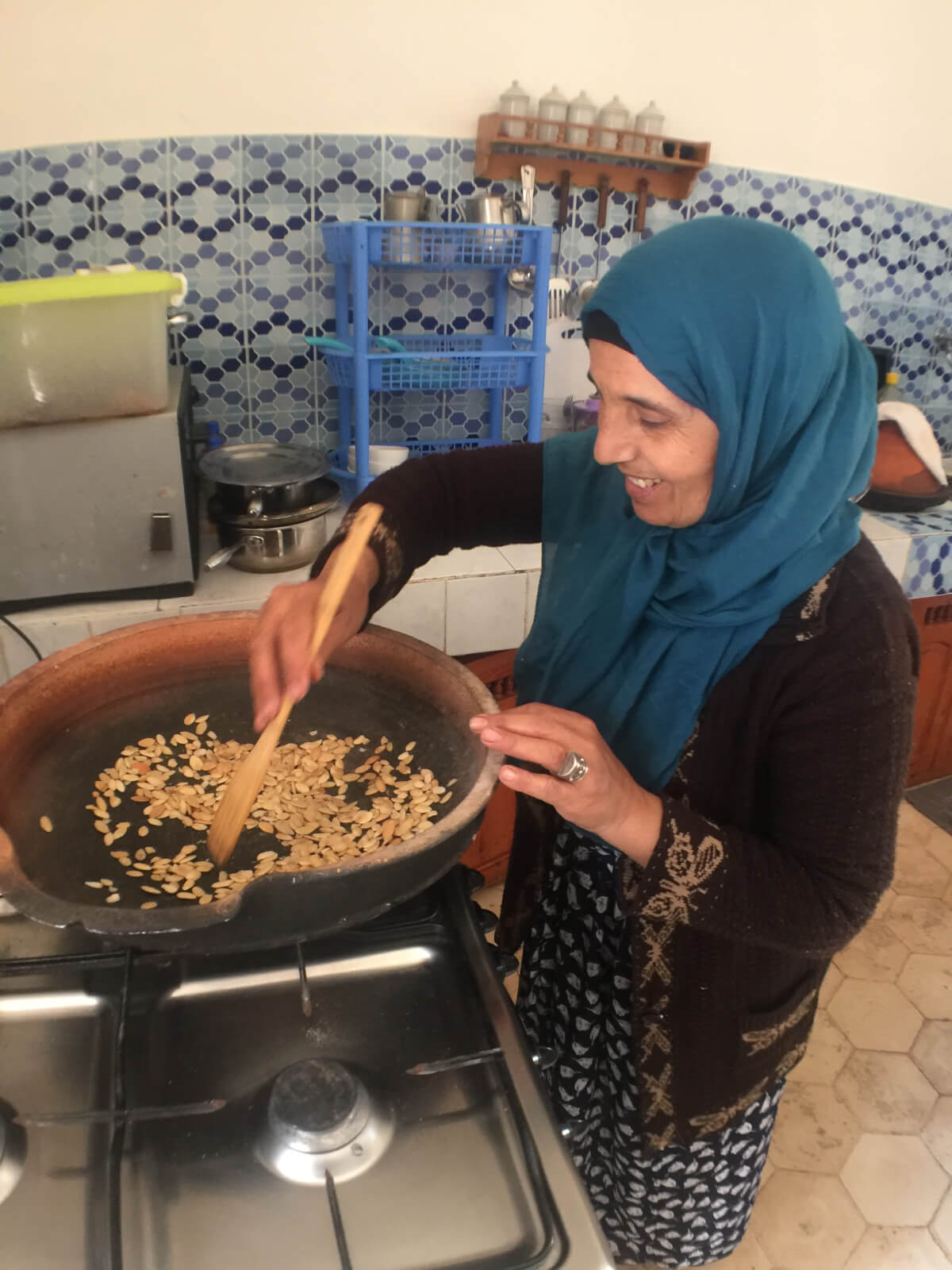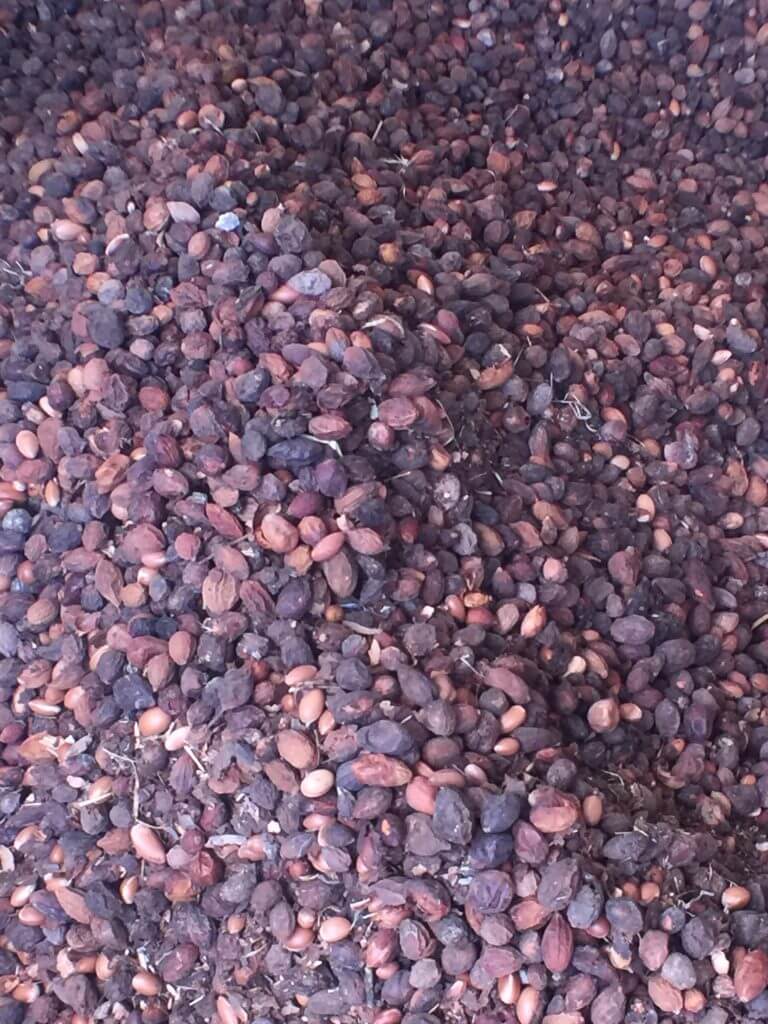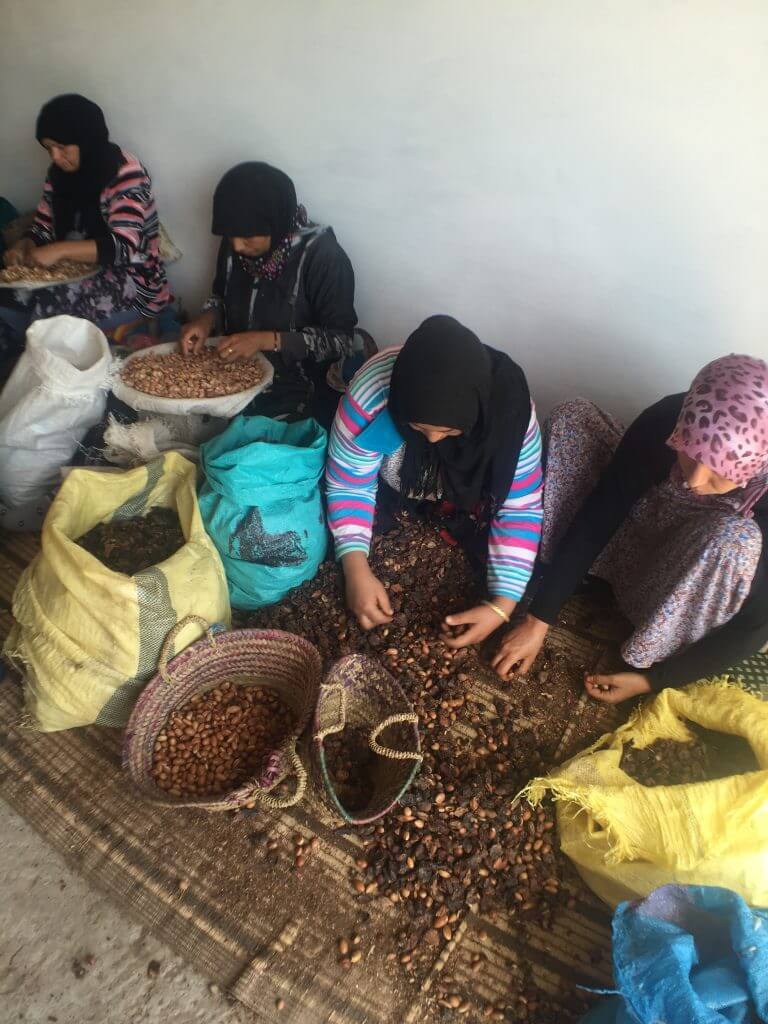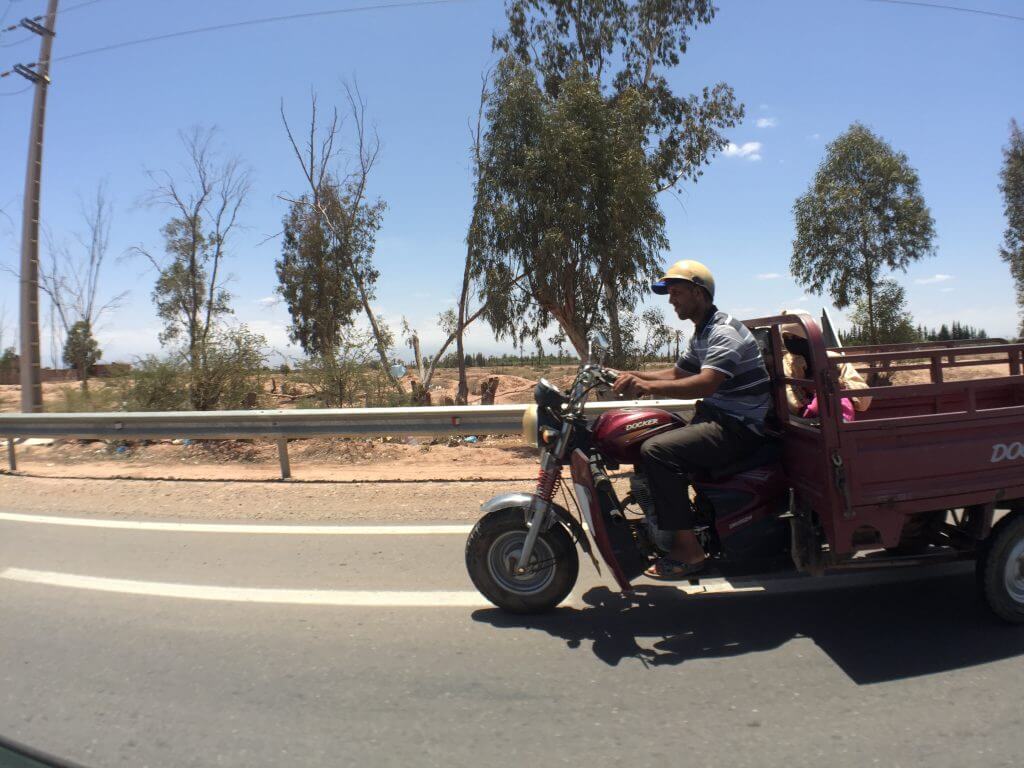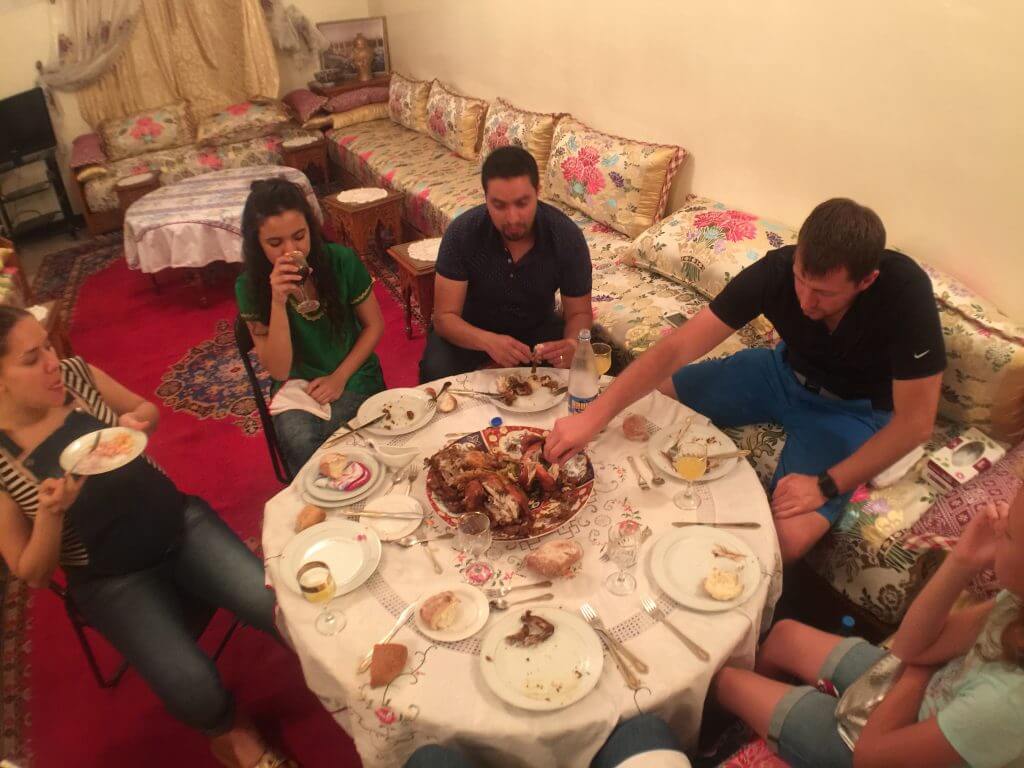In June, I was able to visit both Europe and Africa in search of some rare plants and to vet some suppliers. I took my 12-year-old daughter, Alexa, and Plant Therapy’s Vice President, Paul. My first two blog posts about this trip are: “Farm and Distillery visit in France” and “Morocco Visit in Search of Blue Tansy”.
On the 8th day of our trip, we woke up early, swam in the pool, and ate a nice breakfast of Moroccan Msemen with jam or honey and fresh squeezed orange juice. The juice there is amazing. It seems like everywhere we went they had fresh squeezed juice and it was very affordable. We left Marrakech and headed west on the highway towards Essaouira. It was mostly desert, dotted by small towns and little vegetation. One funny thing, as we were driving I noticed the driver was going over the speed limit. I think he was driving around 100 km/h in an 80 km/h zone. I saw a police officer ahead of us and pointed it out. He said it didn’t matter. Because of the time of day, he said the police are on break and they wouldn’t bother to pull us over. He slammed on the gas and passed the officer going around 120 km/h. The police officer didn’t even look twice. Also, they drive in the middle of the road on a 2 lane highway. He said they do this because there are frequently animals that run across the road and if they are in the middle, it is easier to avoid them from either side.
As we drove along, we started to see more and more of the same tree. It is a tree of medium height with a bare trunk and a wide base. The trunk and branches are kind of gnarly and covered in thorns. This is the Argan tree. We didn’t see any of them planted in groves, only in their natural state. We were told that there are no privately owned Argan trees, but that they are all owned by the government and that most of them are 200+ years old. Each village has the right to a certain section of Argan trees. If a person owns property in town, they have the rights to specific Argan trees on the government land. The Argan oil companies will just contract with these villagers for the rights to the fruit from their trees.
As we pulled up close to one particular tree, we noticed it was full of goats. These goats were all over it, from the lower branches all the way to the top. They were feeding on the bitter fruit. We had to pull over for a picture! The goats play an important part in the process of some of the Argan oil production, as you will see later in this post.
The Argan tree has been used for centuries in Morocco. Traditionally, the trees have been used as firewood by the local people, but in the past few decades, the Argan oil has become more popular for use by the locals. Legend has it, that people began to notice the young appearance of the Moroccan women and began to study why. It began to become famous when Russian scientists discovered the amazing anti-aging benefits of Argan oil and a couple of celebrities began using it. It has become such an important part of the Moroccan economy, that a special government agency has been set up to protect the trees and ensure the sustainability of the oil.
We continued to drive for more than two hours. We eventually came to an area that was naturally thick in Argan trees. We drove through the trees, on a winding dirt road, and came to a facility where the Argan oil is extracted and barreled. The process was simple, yet amazing.
This homestead was great. We were immediately ushered around the back where they had set up a mid-day snack for us. We ate homemade bread with some mixed nuts and Amlou (Note thatour hosts didn’t eat because it was during Ramadan and they were fasting during the day). I had heard of Amlou in the previous days, but we hadn’t yet tried it. It is made of ground almonds, like almond butter, mixed with honey and Argan oil. It was delicious. I asked if they had made this themselves or if they had purchased it and they said they always make it homemade because of the high amount of adulterated Argan oil on the market, they do not trust anything that is sold in town.
Argan oil can be used as a beauty product or as a food item, although it must be processed differently for each. If it is for consumption, the kernels must be cooked prior to the oil being extracted. We were taken into the kitchen so the matron of the home could show us how it is done.
Argan oil production
Each Argan tree will produce an average of 140kg of fruit per year, depending on the amount of rain. 70kg of fruit will yield around 5kg of kernel. 5kg of kernel will result in 2kg of oil. So basically, each tree will produce an average of 4kg (approx. 8.8 lbs) of Argan oil per year. The fruit is harvested in the summer. If it isn’t pre-sold it will be sold on the open market. The basic laws of supply and demand will determine the price. During the summer, the price is less expensive because lots of fruit is available. Between the months of December and May, the price of the fruit goes up, because the supply has decreased. Once the fruit is picked, or dropped off the tree, it will stay good for up to two years. But once the kernel is extracted it will only stay good for 6 months.
The argan fruit is composed of three main parts. The pulp is the bitter outer layer. It is soft and sticky. The hard shell is the second layer and the kernel is located inside the hard shell. The kernel is what contains the oil. None of the fruit goes to waste. The pulp is sold as animal feed, and the hard shell is burned for warmth. This is particularly important because the tree had been used for many years for its firewood. Since it is now illegal to cut the Argan tree down, they needed a replacement for warmth; this is a great alternative.
There are two main ways to get the kernel out of the fruit:
- The goats that feed on the Argan fruit cannot digest the hard shell. They will eat the fruit as one of their primary sources of food then they will poop out the hard shell which is collected by local people and sold on the open market. The hard shell is then broken open to extract the kernel. This produces an oil that smells a little different and is not ideal. This is the cheapest way to get the Argan kernel. This is very important to know. You must know the source of your Argan oil to ensure you aren’t buying “post poop oil.” That is why this particular product is important to buy certified organic.
- The fruit is left on the tree until it becomes ripe and naturally falls to the ground. The fruit is then left to dry out, or it can be collected and brought into the facility to dry out in the sun. The dry fruit is run through a machine that knocks the pulp off the hard shell, then the hard shell is run through another machine to break it open and release the kernel. This is the process we witnessed and the one we will talk most about.
We are told that virtually all Argan trees are certified organic, therefore their fruit starts as certified organic also. But to remain certified organic, the oil must be traced from tree to bottle. The kernels that are pooped out by the goats do not qualify, but there are many other steps also. For example, the trucks that the fruit are hauled on must be certified to have not been used to haul pesticides or other chemicals. Also, the facilities must be certified organic to qualify. Plant Therapy is a certified organic company and we operate out of a certified organic facility. Therefore, we are pleased to be able to offer our customers a high quality Certified Organic Argan Oil that we have personally witnessed the production from tree to bottle.
Adulteration of Argan oil is extremely common as well. As the demand has increased, so has the dishonesty of many of the producers. Many producers will mix paraffin oil or soybean oil into the Argan and sell it as pure oil. It is very hard to detect because it is colorless and odorless and most tests cannot detect this adulteration. This is a product where you must trust your supplier. For many years, Plant Therapy has had suppliers try to get us to sell their Argan oil. We have held out because we didn’t know enough about it to be sure that the product we are selling is pure and of the highest quality. After this visit to Morocco, I am 100% confident in our supplier and their process. Due to these potential adulterations, we have chosen to only sell a certified organic product that we can trace back to the tree.
The production facility
The Argan production facility is part of their homestead. This is the home where one of the company owners, who is approximately 30 years old and college educated, grew up and where his parents and sisters still live. They had multiple small outbuildings on the property where different stages of production are done.
This facility is “state of the art” in the sense that the entire process isn’t done by hand. They told us they are the first company to use modern means to extract the oil from the kernel. Most companies are still doing everything by hand. They purchased some used equipment that was manufactured to produce almond oil, and have made some small modifications and re-purposed it for the extraction of Argan oil.
This particular company hires over 30 women and just 3 men. They hire men to run the 3 machines, which process about 90% of the fruit, and the women will do the final cleanup of the product. So any fruit that makes it through the machine without being properly cleaned, will go into the room where the women will process it by hand. This generally consists of breaking open the hard shell between two rocks so the kernel can be separated. They make it look really easy but it is a learned skill. In the few minutes I tried it, I got lots of laughs and a couple of smashed fingers.
They hire women in particular because their goal is to help with the gender hiring gap, which is a major issue in Morocco. Most of the men can find work without an issue but that is not the case for the women. If the women can’t find gainful employment, they will generally pull their children out of school and put them to work. This company provides a living wage for all employees so they can ensure that their children can stay in school. Each person is paid by the shift. They work 8 hour shifts, 7 days per week. All of the employees are from the small local village and the majority of them are family members. Most of them don’t speak any English so we didn’t really talk, but they seemed genuinely happy to be there. While we were there, they took a break to buy clothing and food from a traveling salesman that stopped by the facility.
This was an incredible trip and I am pleased with what we found. It was evident to me that our supplier vetting process is working. The suppliers we visited proved to be trustworthy and producing a good, clean product. I look forward to doing something similar in the near future and I hope to be able to share that with you. Until then, please let us know any comments and questions you may have. You are always welcome to give us a call at 800-917-6577 or email us at [email protected].
Thank you,
Chris Jones, President
Plant Therapy
Some random photos of Morocco:
Common form of transportation.
Olive stand in the open market.
The open market- This is where the snake charmers are.
Fresh Juice!
Sharing a meal with one of our hosts.




